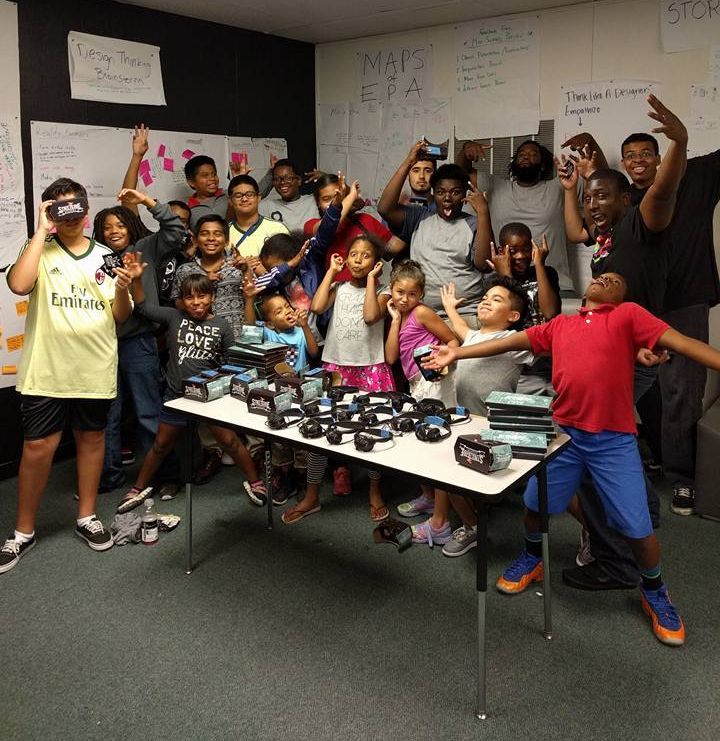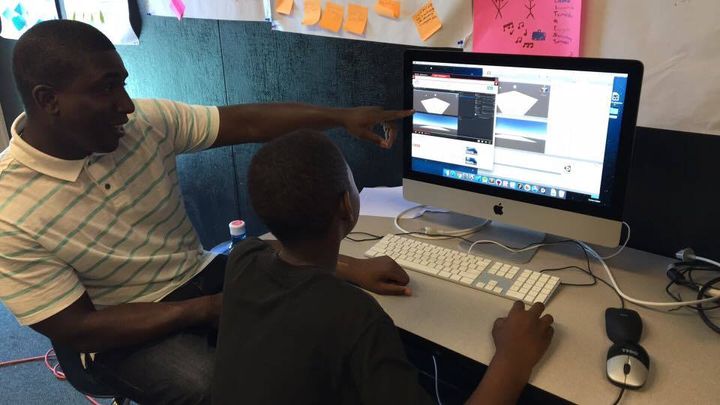
In 2014, Mark Zuckerberg pushed for Facebook to buy Oculus for $2 billion. At the time, it left most people wondering, “Why Virtual Reality?”
Today, some people might further ask Zuckerberg, “Why do you have a virtual reality studio down the hall from your working desk?”
Just as there are now millions of apps for smartphones, Zuckerberg envisions an entire new ecosystem of activities being built around Virtual Reality (VR). This means Oculus could replace laptops, televisions, movie screens, and smartphones (that’s crazy talk!).
Maybe it could even replace seeing our friends live and in the flesh?
Zuckerberg has gone all-in on VR. With an estimated 1.7 billion people currently on Facebook, it’s a safe bet Zuckerberg’s gunning for all of us connecting on these oncoming virtual worlds. In his own words, “VR will be a mainstream-computing platform in 10 years’ time.”
That’s a bold statement for a medium that’s predominantly being used for entertainment purposes like video games and is straddling the line between innovators and early adopters on the product innovation curve.

Instead of limiting ourselves to exchanging texts, perhaps we’ll connect more frequently with people through these new virtual mediums that trick our minds into thinking we’re somewhere else - without actually having to be there.
StreetCode Academy in East Palo Alto intends to be at the forefront of exposing its students to the power of this technology. This summer it held the Bay Area’s first and only VR camp. For eight weeks, over twenty students from 7th to 12th grade met daily, Monday through Friday from 9am to 4pm to learn the ins and outs of VR.
This summer’s VR camp was months in the making. Lead instructors Kareem Edouard and Elliot Williams began planning how to bring the VR camp to East Palo Alto as early as fall of 2015. It was important for the duo to have underrepresented community members learning how to use this technology as early adopters. It’s all about bridging the digital divide and providing equal access to underserved communities.
The duo managed to arrange field trips for their students to visit the Google DayDream and Microsoft HTC Vive labs. The goal was to get the students to interact first hand with the technology to further understand its current usage.
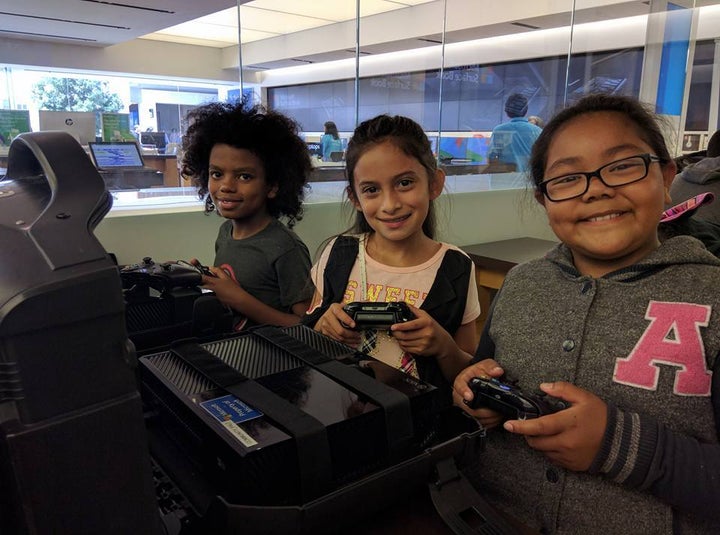
The day the students visited Google, they sat next to the DayDream engineers with budding confidence. When asked by their lead instructors to, “Talk about the difference between VR and AR”, the kids spoke as though they were asked about their family members. The DayDream engineers were so impressed with the passion, curiosity, and budding knowledge of the students, that they invited them back for another visit.
Another DayDream engineer wants to get further involved with the budding VR program. All thanks to one visit and a few passionate kids. What kind of results would a semester-long program bring?
For lead VR instructor Kareem Edouard, it was important that students understand the process of creating a VR experience in the context of where the students call home: East Palo Alto. They leveraged learning VR to tell the story of the East Palo Alto community. For a community that for a long time had the reputation as the city with the highest homicide rate in the nation, it was important for the instructors to share the progress the community has made in the last two decades.
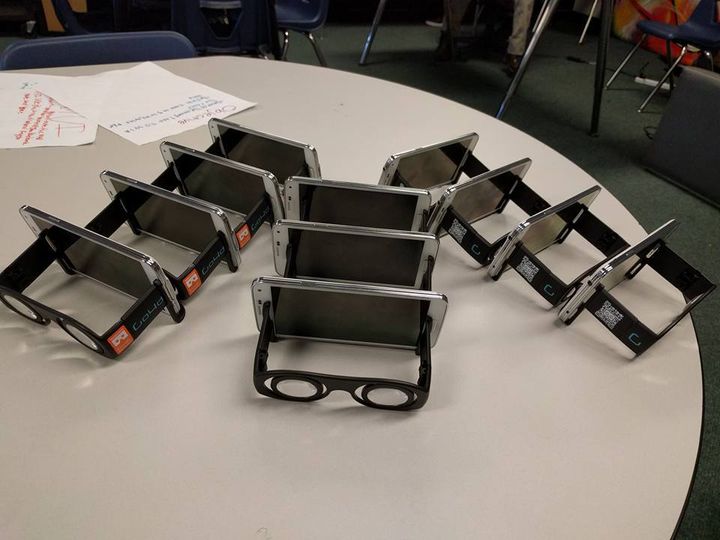
They segmenting the VR curriculum into three modules. First, the students learned about design thinking. During this R&D phase, they learned how VR videos are constructed, the relevant terminology, and were asked to brainstorm on potential projects. Next, the students mapped out which part of the East Palo Alto community they wanted to showcase. This meant going onsite and thinking about how to best represent their chosen environment for the VR user. Finally, the students were asked to storyboard their projects shot-by-shot to ensure a cohesive flow for their VR demos.
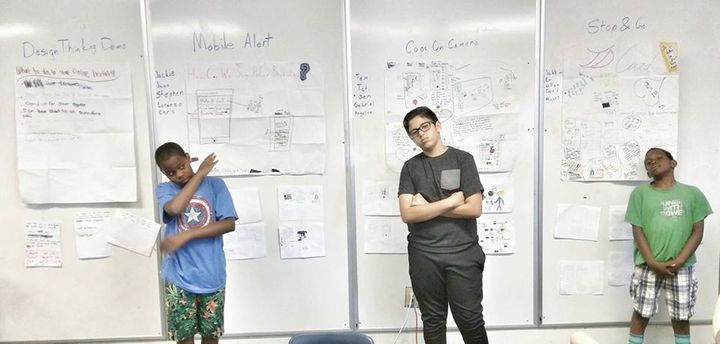
The kids became so enamored with their projects, they came to call their design and development space at StreetCode Academy, “The Dream Palace.” It was “a place to innovate, create, and energize the East Palo Alto community.”
At the StreetCode Summer Showcase, the VR projects were the main attraction. The students proudly told the story of their VR project: why they chose it, how they put it together, and how much they learned about design. Their excitement was infectious. They smiled beaming with pride and couldn’t wait for audience members to try out the VR experience they crafted.
Trying on the VR-phone headset, all the experiences felt smooth. The visuals were direct and concise, with the voice-over narration adding another layer of personal touch by the students. It was clear the students had worked tirelessly to make their VR productions an extension of their identity.
Each project manifested the personality of the student creator, but demonstrated a shared understanding of storytelling skills. From Stanford students, to local activists, to council members Larry Moody and Lisa Gauthier, all walked away impressed with what the students were able to do over the summer.
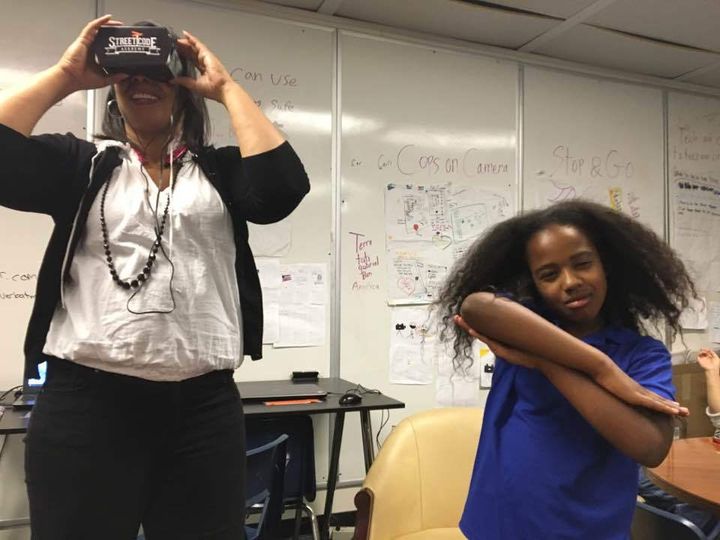
VR is a huge leap for a young tech program such as StreetCode Academy. In less than two years, they’ve gone from instructing HTML/CSS/Java to having students create mobile apps, to now creating experiences with VR.
Most of their instructional manpower has come from volunteer Stanford computer science students and local tech enthusiasts interested in helping out the program. Given the chance and access to mentors and technology, the program highlights the immense potential to be found in underrepresented communities such as East Palo Alto.
What experiences will they map out next for the community?
In an age where apps are the defining relationships with technology, StreetCode Academy understands that people are still the foundational element of all tech ecosystems. Harnessing the power of technology, they’ve been able to bring people together and get students excited about learning. Excitement leads to passion, passion leads to innovation.
It’s my sincerest hope they can continue their trailblazing programs for people from underrepresented communities.
